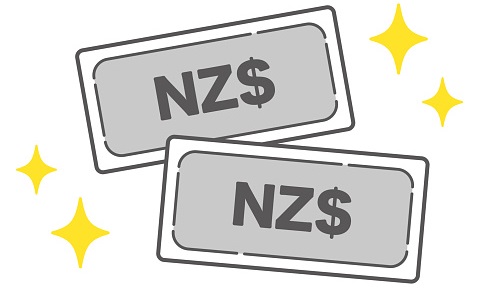NZD currently sits in joint top spot (alongside GBP) in the weekly G10 FX performance table in wake of a solid Wednesday performance on the back of stronger than anticipated Q1 labour market data released overnight. NZDUSD is now up about 0.6% on the week and is again flirting with the 0.7200 level, having rebounded impressively from Tuesday’s lows in the low 0.7100s. Though still around 90 pips below last week’s highs in the 0.7280s, the pair has recovered well over the last month since it hit lows around 0.6950 in late March/early April. The US dollar has been softening amid a less supportive yield environment and risk appetite has been buoyant (which is good for risk sensitive currencies such as the New Zealand dollar).
But other more kiwi specific factors have also helped to support the currency over the last month. Firstly, the data has been strong; prior to the month of April, the data in New Zealand (i.e. for Q4 2020) had been coming in weak. But economic momentum appears to be returning; as noted above, the most recent labour market report saw a larger than expected job gain in Q1 2021, a larger than expected drop in unemployment and a larger than expected jump in the participation rate. CPI numbers for Q1 also came in above expectations, though at a YoY rate of 1.5%, inflation remains below the RBNZ’s target.
March trade numbers showed the country’s trade balance continuing to drop modestly from recent all-time highs, but still remaining solidly in the green (implying NZD continues to derive structural support from trade flows). In terms of survey data, the March Business PMI survey soured to 63.6, a series record high, and the latest ANZ business surveys (Business Confidence and Activity Outlook) for April was stronger than expected. Meanwhile data from GlobalDairyTrade auctions shows diary prices remaining elevated close to recent highs (dairy products are a key New Zealand export).
On which note and secondly, the commodity price backdrop has also been favourable for the kiwi. ANZ’s New Zealand Commodity Price Index rose 2.2% MoM in April to 260.5, a new record high (up from December’s multi-year lows at 224.5). That rise reflects a 3.5% rise in the forestry index (which is getting a boost from the recent surge in, for example, lumber prices) to all-time highs, a jump in meat prices and higher aluminium prices.
Thirdly, expectations have grown over the last month that the RBNZ will start hiking rates in 2022, making it one of the earliest G10 central banks to do so (perhaps only beaten to the mark by the Norges Bank, which could start hiking rates before the end of the year). The RBNZ met in April and did not deliver any surprises (i.e. rates were held at 0.25% and no changes were made to the bank’s QE programme) and even sounded quite dovish at the time given recent poor data for Q4 2020. However, as evidence grows of improving economic momentum, particularly with regards to the labour market and inflation, analysts are betting that the RBNZ will start tightening policy in 2022. For example, Capital Economics forecast that inflation will move above the mid-point of the RBNZ’s 1-3% inflation target by the middle of this year and that unemployment will drop to around 4.0% by the end of 2022, outcomes that are consistent with the RBNZ beginning a tightening cycle.
Implications for the kiwi?
Capital Economics think that the fact that the RBNZ is set to begin hiking first (versus the RBA) implies that NZD ought to appreciate at a faster rate than AUD over the coming years. In terms of what that looks like versus the US dollar, the economic consultancy expects NZDUSD to move up to and average 0.7800 in 2023 (an 8% rally from current levels), versus their forecasts for AUDUSD to move up to and average 0.8000 in 2023 (a comparatively small 3% appreciation).
But for these forecasts to come into fruition, USD is going to have to play ball, or at least not strengthen broadly as a result of safe-haven demand. In terms of what could cause another long-term flight to safety in FX markets (hurting NZDUSD), a resurgence in the pandemic (a vaccine resistant mutant variant?) seems the standout risk. Failing that, an ongoing steady global economic recovery seems likely, and G10 FX performance over the coming years is likely to largely reflect interest rate differentials – meaning if the RBNZ is going to be one of the first G10 central banks to start hiking, it should fair well.




